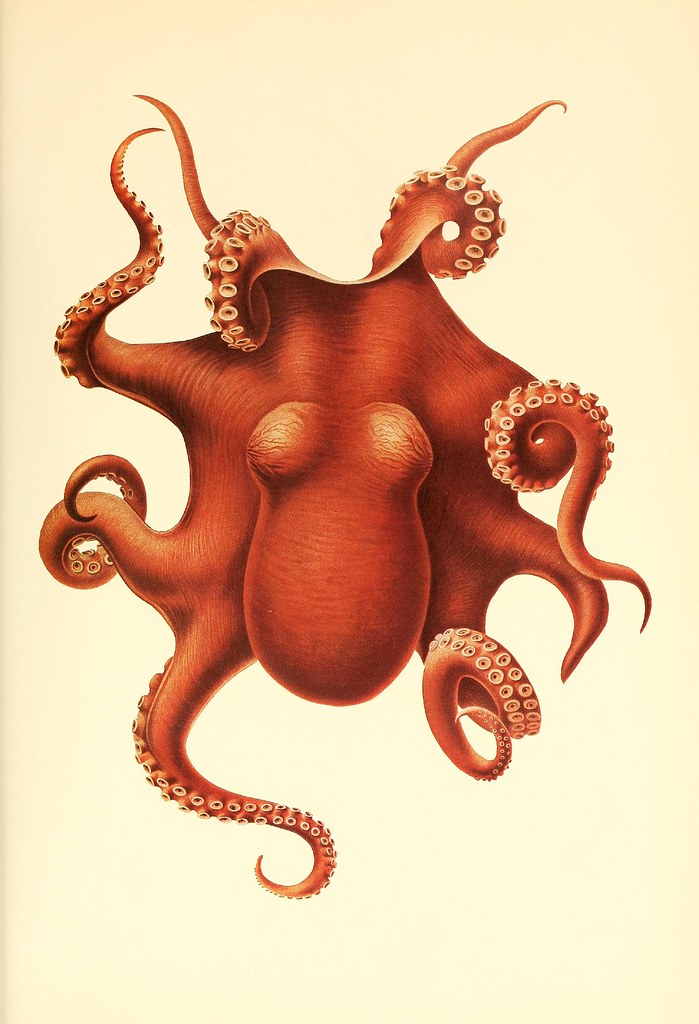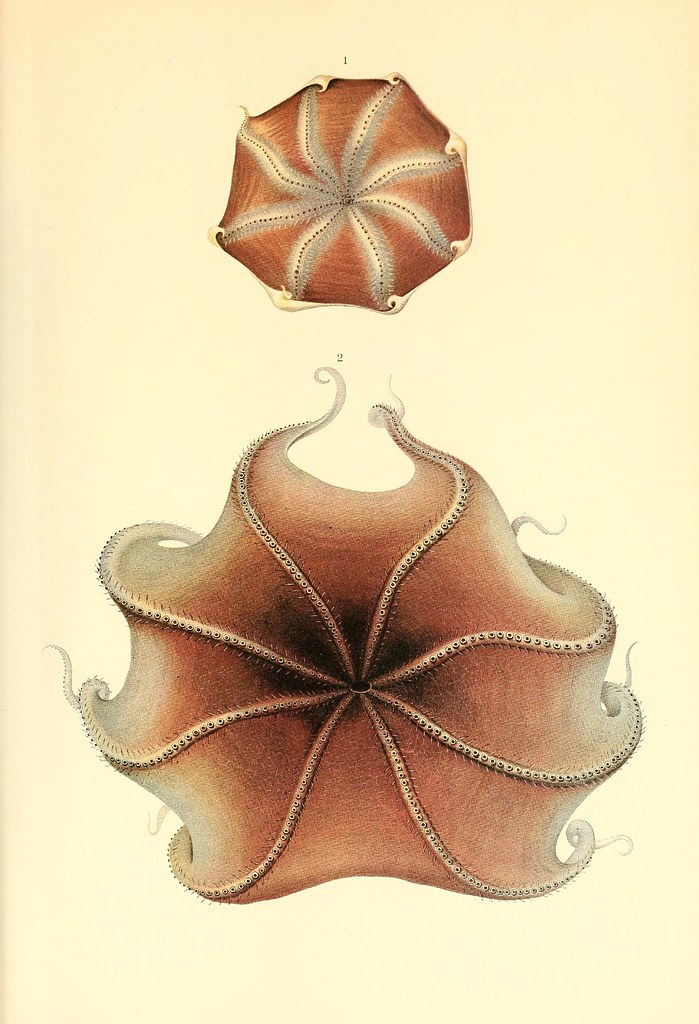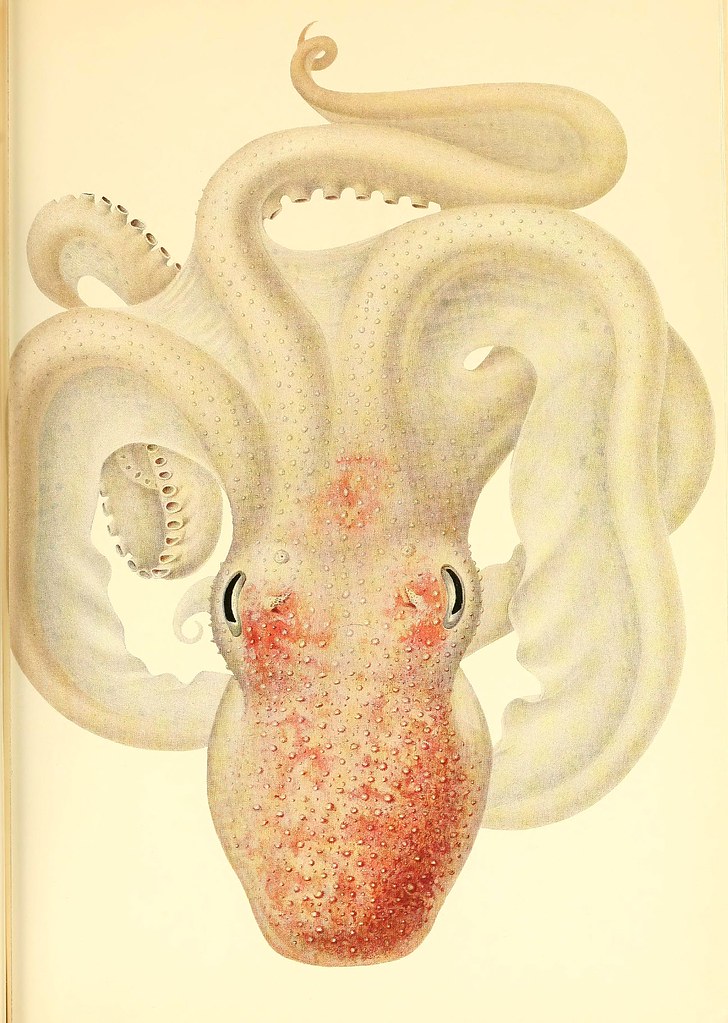

"Professor Chun contributed a book on cephalopods (with a corresponding illustration/photograph atlas) to a multi-volume work called 'Wissenschaftliche Ergebnisse der deutschen Tiefse eexpedition auf dem Dampfer Valdivia' (From the Depths of the World Sea: Descriptions of the German Deep Sea Expedition)."
From the intro to th BiliOdyssey blogspot.

The octopus (Greek Ὀκτάπους, 'eight-legs') is a cephalopod of the order Octopoda that inhabits many diverse regions of the ocean, especially coral reefs. The term may also refer to only those creatures in the genus Octopus. In the larger sense, there are 289 different octopus species, which is over one-third of the total number of known cephalopod species.
Octopuses are characterized by their eight arms (not tentacles), usually bearing suction cups. These arms are a type of muscular hydrostat. Unlike most other cephalopods, the majority of octopuses — those in the suborder most commonly known, Incirrina — have almost entirely soft bodies with no internal skeleton. They have neither a protective outer shell like the nautilus, nor any vestige of an internal shell or bones, like cuttlefish or squids. A beak, similar in shape to a parrot's beak, is the only hard part of their body. This enables them to squeeze through very narrow slits between underwater rocks, which is very helpful when they are fleeing from morays or other predatory fish. The octopuses in the less familiar Cirrina suborder have two fins and an internal shell, generally lessening their ability to squeeze into small spaces.
 |
From: http://www.animalwebguide.com/Octopus.htm

No comments:
Post a Comment